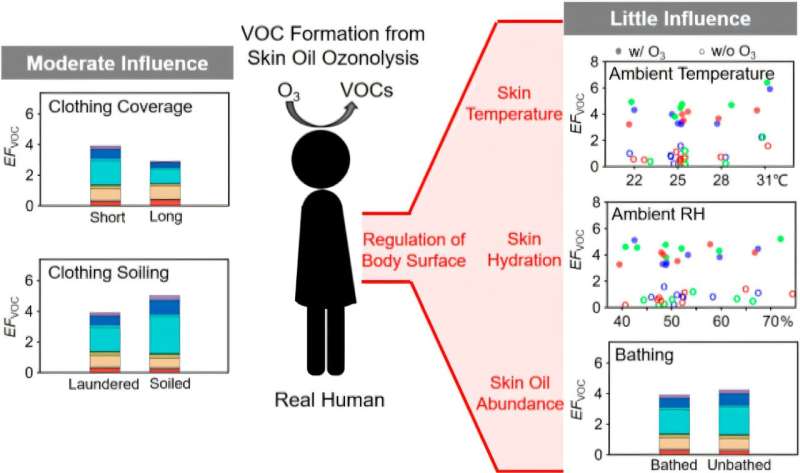
Skin, the body’s largest organ, serves as a crucial barrier against environmental hazards. However, a recent study reveals that the interaction between skin oils and atmospheric ozone can significantly affect indoor air quality. This complex relationship, influenced by various personal and environmental factors, remains largely misunderstood.
A team of researchers from Tsinghua University in China conducted an in-depth investigation to better understand these chemical reactions. Their findings, published in ACS Environmental Au, suggest that the concentration of ozone in the air is the primary factor influencing the emission of volatile organic compounds (VOCs) from human skin. This study challenges previous assumptions about the roles of temperature, humidity, and personal hygiene.
Unpacking the Study’s Findings
The researchers subjected three male volunteers to different scenarios, altering temperature, humidity, hygiene practices, and clothing choices. Contrary to past research on nonhuman materials like cotton fabrics and soiled clothes, which linked higher humidity and dirtier clothing to increased VOC levels, this study found that ozone concentration alone accounted for over 90% of the variations in VOC emissions from human skin.
Human skin oils are rich in ozone-reactive compounds such as squalene and various unsaturated fatty acids. When these compounds react with ozone, they produce a range of volatile compounds, including decanal and acetone. The study revealed that while refraining from changing clothes for three days increased VOC emissions by about 25%, not showering had minimal impact. This suggests the body’s ability to quickly replenish skin oils mitigates the effect of hygiene on VOC production.
Implications for Indoor Air Quality
The study’s findings hold significant implications for understanding indoor air quality. As people spend a considerable amount of time indoors, the interaction between skin oils and ozone could contribute to indoor air pollution. The researchers noted that wearing more clothing reduced VOC emissions by nearly 50%, suggesting that clothing acts as a barrier to ozone exposure.
However, the study’s limitations, including its small sample size and controlled laboratory settings, highlight the need for further research. The researchers emphasized the importance of expanding studies to include diverse populations and real-world environments to better understand these interactions.
Expert Opinions and Future Directions
Experts in the field have recognized the study’s contribution to understanding the impact of ozone on skin oil emissions. Dr. Yuekun Qu, a lead researcher, stated,
“Results based on nonhuman materials are insightful but may not fully reflect what occurs on the human body.”
This underscores the need for human-based research to capture the complexity of these interactions.
Looking forward, the study opens avenues for exploring how different environmental conditions and personal habits influence indoor air quality. By considering factors like clothing and ozone levels, future research could develop strategies to mitigate VOC emissions and improve air quality in indoor spaces.
As this study sheds light on the intricate dynamics between skin oils and ozone, it emphasizes the broader impact of environmental factors on human health. Understanding these interactions is crucial for developing effective measures to enhance indoor air quality and protect public health.







